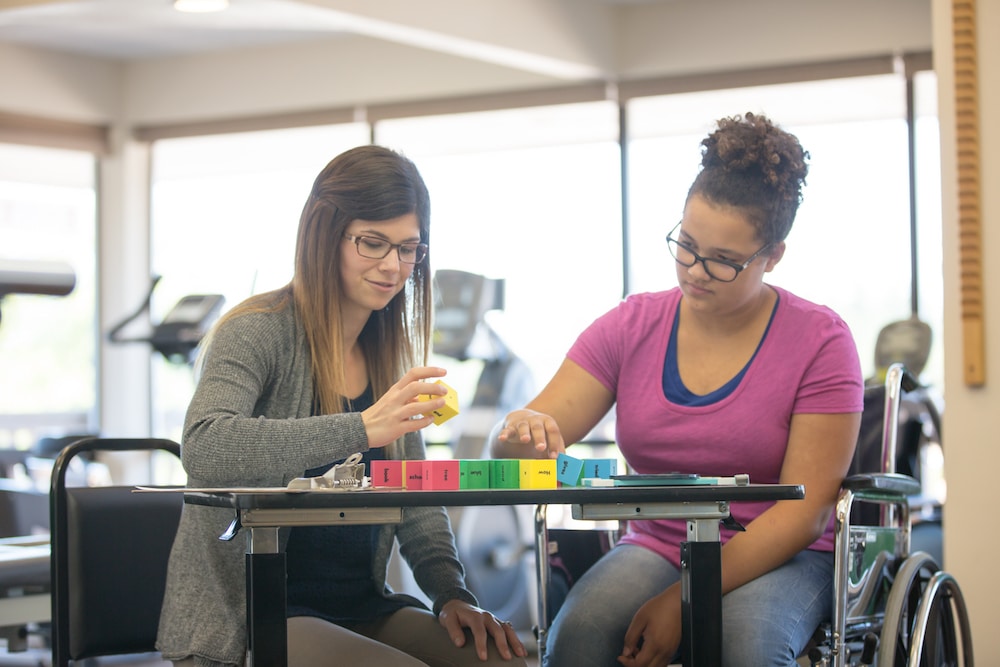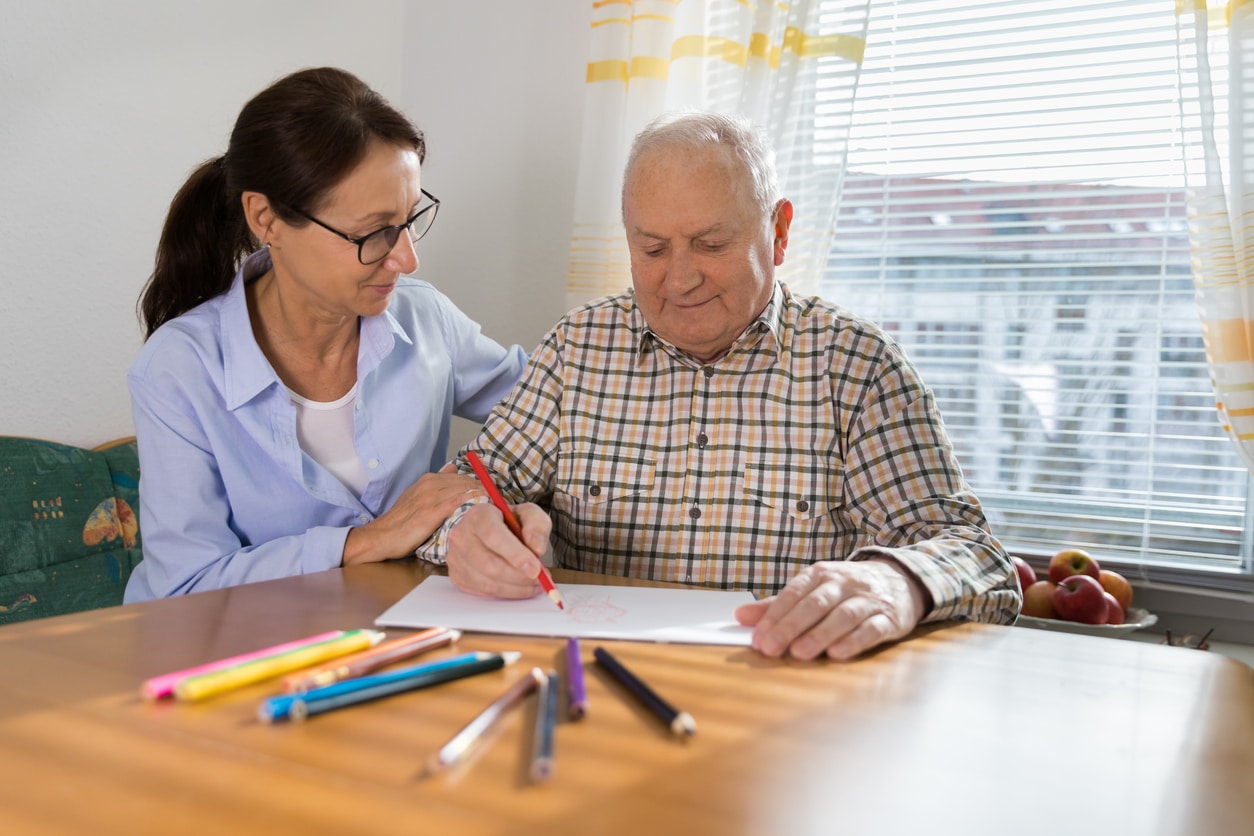At Summit Healthcare, our mission has always been to deliver exceptional, compassionate care close to home, so of course, that mission extends to our team of occupational therapists. Continue reading in order to learn more about the benefits of occupational therapy in Show Low, AZ.
What is occupational therapy?
Occupational therapy is a form of therapy that helps patients recover from a physical or mental illness through typical daily life activities. Therapists have a good understanding of what the patient’s needs, abilities, and environment are to transition to the home, skilled nursing facility, or next level of care. Occupational therapy in acute care, such as at Summit Healthcare, focuses on a holistic view of individuals where many factors can influence the success of recovery and the rehabilitation process.

Summit Healthcare’s occupational therapy team will help people learn new skills or adapt to a permanent loss so they can do the day-to-day tasks that occupy their time. Typically, these patients have experienced a sudden decline in their medical and functional status due to a traumatic event, a worsening of a progressive disease, or the onset of a new condition.
Occupational Therapy Vs. Physical Therapy
Think of a physical therapist as the person who works with you to restore gross motor function after an injury, surgery, or other health problem. The goal is to return meaningful movement.
Once that is done, your occupational therapist has the job of returning you to your life. He or she will restore your functional mobility so you can perform day-to-day actions and activities that make up your healthy daily life.
What conditions can occupational therapists help with?
Our therapists assist the patient’s medical care team by facilitating early mobilization, restoring function, preventing further decline, and coordinating care, including transition and discharge planning. This occupational therapy team can help treat the following conditions:
- Arthritis
- Carpal Tunnel Syndrome
- Dislocations
- Fractures
- Nerve Injuries
- Sprains/strains
- Strokes
- Tendon Injuries
- Tendonitis
- Bone or joint trauma
- Upper body injuries
- Cardiopulmonary
- Neurological disorders
- Congenital Abnormalities
- Fine Motor Deficits
- Pediatric Disorders
- Lymphedema
- Chronic Swelling
- Daily Living Skills
- COPD/CHF/Endurance
Occupational Therapy Treatment Methods
Summit Healthcare therapists use any combination of activities to strengthen muscles, increase movement, restore coordination and balance. Our occupational therapy team often uses the following treatments to focus on helping people achieve their independence.
- Splinting
- Functional training
- Activities of Daily Living (ADL) retraining
- Adaptive equipment assessments
- Adult nerve sensory activities
- Energy conservation techniques
- Ergonomic retraining
- Relaxation Techniques
- Developmental Disorders
- Therapeutic Management to increase ROM
- Pediatric fine motor & functional skills training
- Coordination and maintaining balance due to Parkinson’s disease, stroke or neurological disorders

Goal of Occupational Therapy at Summit Healthcare
The goal of Summit Healthcare’s occupational therapy team is to maximize an individual’s ability to regain functional independence in daily living activities and functional mobility in the home, work, and community while maintaining physical, physiological and emotional health.
Summit Healthcare’s occupational therapists work in the hospital to treat patients who are in an acute care setting. Additionally, our therapists also provide a comprehensive outpatient program that complements the current outpatient physical therapy program.
Summit Healthcare’s occupational therapists have a broad range of clinical skills to acute/critical services that include:
- Knowledge of the disease process, and surgical and medical interventions.
- Education in anatomy, kinesiology, and neurology, and their practical application to physical rehabilitation.
- A patient-focused evaluation, intervention, and task modification to facilitate progress towards goals.
- Consideration of pre-hospitalization roles and patient’s likelihood of resuming them.
- Consideration of discharge destination, and the potential need for adaptive equipment and/or modifications for safety and driving, and/or community mobility needs.
- Development of an intervention plan with performance-based goals. Intervention and the process of discharge planning may occur simultaneously depending on the length of stay in the acute care setting.
How can I prepare for my occupational therapy session?
Occupational therapy gets its name from its focus on helping patients with everyday activities, or “occupations.” Our Summit Healthcare occupational therapists simply have the goal of getting you back to the normal everyday things you do in your life. We address physical abilities, mental abilities, and how you live or work in your environment.
There isn’t anything you need to do to prepare for these sessions. Simply wear comfortable or loose clothing, and sneakers or rubber-soled shoes. You may not want to eat anything if we’re focusing on more physical activities, but this is personal preference. Really the only thing you could do to prepare is to consider what is important to you and what you feel you may have lost due to your illness, injury, or change in life. That way your therapist knows areas you seek to focus upon.
How long do occupational therapy sessions take?
There aren’t any “set” timelines, but initial evaluations are generally 60 minutes. Subsequent visits usually last from 30-45 minutes. At least 30 minutes of that will be one-on-one time with your Summit Healthcare occupational therapist. Some sessions will be longer, depending on your situation.
How many sessions will I need?
The duration of your occupational therapy is completely dependent upon your unique situation. Occupational therapy sessions can last anywhere from 2 weeks to 6 months. We set a general plan after we can fully understand your situation during your initial evaluation. From there, the plan may be adjusted if one area is progressing faster or slower than we thought. We will weigh your progress, insurance guidelines/limitations, and how much-skilled care you need moving forward. We will give you a home exercise program; following it diligently can reduce your occupational therapy timeline.
Is downtime needed after an occupational therapy session?
The goal of our therapists is to challenge our patients to keep regaining more and more of their former level of physical or mental ability. This keeps your therapy more interesting and it moves the needle of your progress. However, we don’t seek to have you need to spend time recovering after your session. You may have some initial soreness, especially in the beginning of your therapy, but this should be able to be handled with simple over-the-counter pain medication and it should only last a day or two.
What is geriatric occupational therapy?
For seniors, occupational therapy can take many different forms. It may simply have the goal of overcoming an injury or change in life to maintain an active, productive, independent life. Our Summit Healthcare occupational therapists look beyond surface symptoms and look for any underlying issues that could also be having a negative impact on the patient’s life.

After an injury, most patients will be assigned one of our occupational therapists after a physical therapist has helped the patient to regain strength and mobility. This may be a physical injury, such as a fall, or it can involve a cognitive event, such as a stroke. In the aftermath of a fall, for instance, your occupational therapist will practice walking, improve your posture, and look at your environment to see if there are changes that can be made that lower the chances of future falls.
We may assess an older adult’s ability to drive to see if this is still a safe option. If it isn’t your therapist may help you find alternative transit and help you prepare for what you can expect when on that new transportation.
Pediatric Occupational Therapy Offered in Show Low, AZ
Occupational Therapist Laura talks about the pediatric occupational therapy services offered at Summit Healthcare. Read more about Pediatric Therapy services we offer »
Outpatient Services at Summit Healthcare
Summit Healthcare’s occupational therapists work with your medical care team to collaborate to ensure the implementation of an interdisciplinary plan of care and a coordinated and appropriate discharge plan.
Clinic Location
Summit Healthcare Outpatient Pavilion
4951 S White Mountain Road
Building A
Show Low, AZ
928-537-0248
